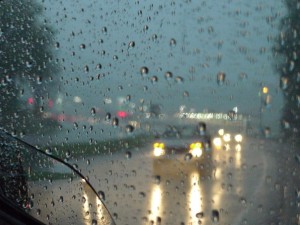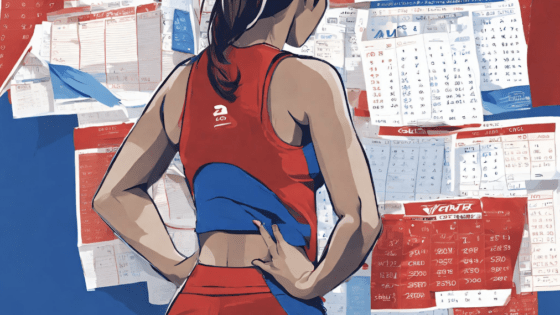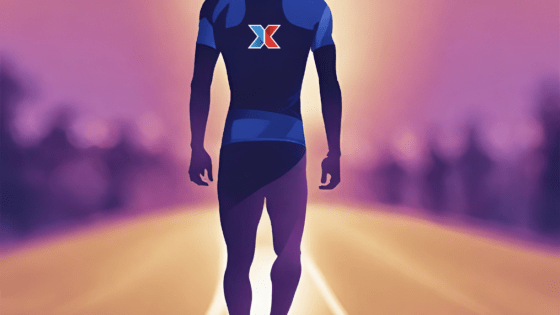While everyone trains to be their best on race day, more often than not the day itself leaves a lot left to be desired. Being able to adjust your expectations and strategies on the fly is a critical part of racing successfully; it’s a hallmark of the experienced triathlete. In this article, we’ll cover some quick tips on how to handle an unexpectedly wet day of triathlon racing.
Permission Granted to be Mentally Flexible
It’s one thing to race to your level of fitness; it’s another thing to manage your fitness across the course of your race day according to the terrain, the conditions, and how your body is handling the work.
It’s really hard to simply let go of the goals you have honed for weeks and months. But more often than not, it’s required if you are to have a good race performance.
Race Day doesn’t care what your fast bike split from last year was. It doesn’t care about that one magical long run you had 6 weeks ago. It doesn’t care if you have the latest and greatest wetsuit…it only cares how you put everything together into a solid day.
And yet, when things go south, you will still see countless competitors race like robots — they simply do what they did in training as that’s all that they know…and if race day throws extreme heat or wind at you, and you don’t adjust, your day will most certainly end prematurely.
Think of your training as physical preparation, but know that your real race day goal is to execute like a veteran. This means adjusting your goals so that you can be your best given the cards you have been dealt; who knows, you might still be surprised by the final finishing time and place.
Access Our Insider Triathlete Email Series
The Effect of Rain on Your Gear
Basically a really wet day means that all of your gear will be damp. This will make it harder to use and operate, so be sure to make quality choices about what you will wear so you don’t get stuck in transition wrestling with your race top only halfway on!
You will want to make sure your transition area is clear and while not waterproof (cause it will all get wet anyway), at least nothing is floating away or being damaged by sitting in a giant puddle.
You will want something of a base layer or a wind block layer for the bike, especially in the early miles. The extra moisture will mean you’ll be cold from the wind on the bike, so either layer up pre-race or consider something simple and snug like a bike vest that is was to put on.
On the bike you’ll want clear lenses so you can see better. You might even consider a product like RainX to keep the lenses clear of water so you don’t have to wipe them.
For the run, you’ll want a snug pair of socks so you can avoid blisters. And you’ll want a visor or hat to keep the rain out of your eyes. If your top is loose, it will chafe and be wicked uncomfortable, so be ready for that.
The Affect of Rain on Your Nutrition
Cool weather means you will probably forget to fuel properly. The first hour of the bike is still critical, so make sure you focus on feeding while everyone else forgets. Keep the hydration up, especially as you won’t think about drinking with water everywhere. The upside here is when you have to pee on the bike, Mother Nature will get you pretty clean!
Note that rain will make the roads treacherous and will make operating bars and gels and blocks and beans and your baked potatoes much harder. It will melt your salt caps. It will make aid stations crazy…you must alter your plan so that your food will be accessible and safe to eat!
The Affect of Rain on Your Racing
I saved the best for last; and this is the most important. When the weather goes south, you absolutely have to put your pre-race performance goals aside in favor of a great overall race. You can still be fast and earn a better place, but trying to be your absolute perfect best in less-than-ideal conditions means taking risks and endangering yourself and others. Simply not worth it!
The effect on the swim is negligible, other than reducing some visibility when sighting…so pick good lines before the race starts or when you see other waves start.
On the bike, rain will make the roads extra slippery and dangerous. When the roads are wet, remember to turn with your body, not the bike (try to keep the bike upright)!. Work the brakes to slow down well before any hard turns, and use your body language (sit up, etc) to communicate with other racers how you feel about the part of the course you are on.
Stay to the right and be smart. Watch out for puddles as there could be a big pothole hidden there. And be extra cautious at aid stations. Remember it’s better to have a slightly sub-par bike, be safe, and go on to hammer the run!
On the run, the run will mean soggy shoes and potential blisters. But it also means lower temps which means you should be able to run up to or perhaps better than planned. Of course, this depends on how you handled the bike and your fuel, but know that this is where you’ll redeem your performance.
You still need to follow your general pacing plan based on your race distance, but know that you have a bit more flexibility. Stick with your nutrition, try to keep the feet from getting totally soaked, and monitor your effort. If you are lucky, you should be ready to ramp up the effort a bit earlier than usual and earn a great place on the day.
The Effect of Rain on Recovery
After having raced in the rain, you will be really, really cold. Almost hypothermic, unless the temps were in the 80s or higher. You will need to get into warm, dry clothes as soon as possible. Again, a base layer would be nice here.
You’ll also need to eat and drink more than usual as your body has worked overtime to fuel your muscles and keep you warm. If you choose hot fluids like coffee, tea or hot chocolate, do your best to consume some water as well. If possible, a nap could be a great way to accelerate recovery.
Finally, don’t forget that all of your gear, especially your bike, will need some attention. Odds are your bike will be covered with grime and your will have worn the brake pads down — a lot. Your shoes will be soaked and all your gear will start to stink unless you clean it up soon. And don’t forget a quick mental recap of what worked and what you’d change…so you can do it better next time!





Brenda Ross
No mention on tire pressure. Would you change your tire pressure?